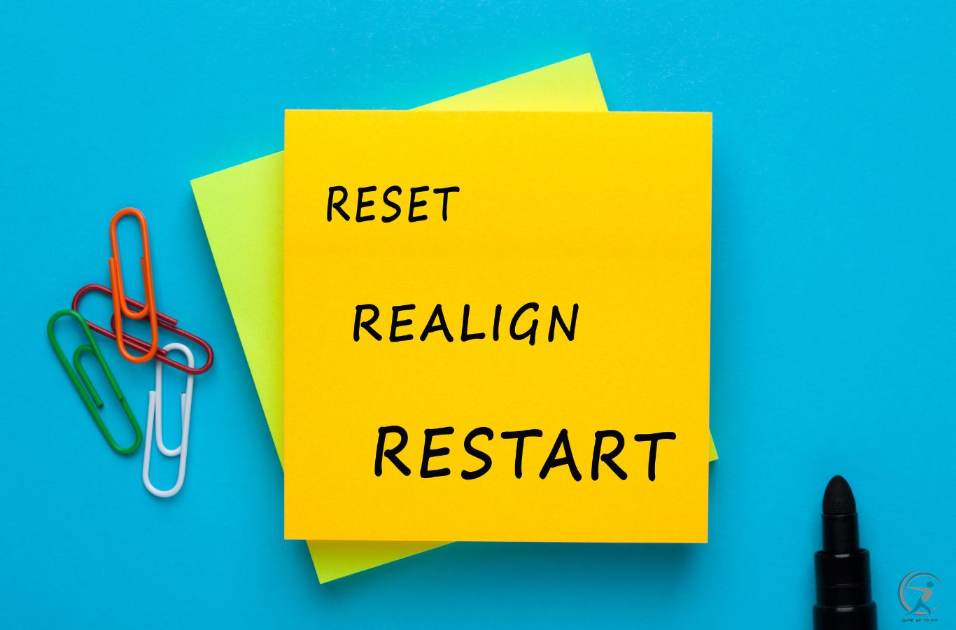Learn how to reset your metabolism with these five easy steps to boost your weight loss journey and lose stubborn fat fast.

Is your metabolism making it difficult to lose weight? Despite eating less and attending numerous fitness classes, can’t you shed stubborn fat? If this sounds like you, your metabolism might be hindering your fitness goals.
Your metabolism breaks down nutrients from food into energy. It is crucial for muscle building. Our bodies prefer using anabolism, which creates new cells, over catabolism, which breaks down molecules. There are natural methods to increase your resting metabolic rate. This is the speed your body burns calories at rest. Boosting this rate helps your body burn fat instead of storing it.
Key Takeaways:
- Reset metabolism with 5 steps for weight and fat loss.
- Prioritize balanced diet, exercise, and sleep.
- Boost metabolism by eating more protein.
- Exercise regularly for weight management.
- Nootropics enhance brain function for motivation.
- Intermittent fasting aids in resetting metabolism.
- Shredded abs workout for toning.
- Focus on HIIT, planks, squats for a toned stomach.
- Stay active for weight management and health.
- Reset metabolism for increased calorie burn.
How to Reset Your Metabolism?
To reset your metabolism effectively, prioritize maintaining a balanced diet rich in whole foods, ensuring adequate hydration, engaging in regular physical activity, practicing stress management techniques, and prioritizing sufficient sleep.
While the idea of a metabolic reset button is enticing, it’s important to understand that metabolism is a complex process and not something you can simply “reset.” However, you can certainly adopt healthy lifestyle changes that support your body’s natural metabolic function, potentially leading to increased calorie burning and weight management.
Step One: Eat More To Boost Your Metabolism.

Eating more calories is one of the simplest ways to increase your metabolism. Your body requires food to function well. Not eating enough can make your metabolism slower. If you consume too few calories, your body enters survival mode. It then stores extra energy as fat when you’re asleep. Eating three meals and two or three snacks a day can balance your hormones. This keeps your blood sugar stable and prevents hunger pangs that may reduce your metabolic rate.
Adding more protein to your diet can also boost your metabolism. It helps your body release fat instead of storing it. The best sources of protein include meat, dairy, eggs, fish, and shellfish. For extra protein without animal products, consider beans or nuts. You can add almonds or walnuts to salads, wraps, and desserts.
This is a myth that has been around for ages.
This is a myth that has been around for ages. It’s called metabolic rate, and it’s not true. The truth is doing nothing will do more harm than good, so don’t sit on the couch all day watching Netflix or lie in bed pretending to sleep until your mind goes numb. Get up, get active, and burn some calories!
It is called the metabolic rate.
Metabolism measures how many calories your body uses to perform basic functions, like breathing and digesting food. The higher your metabolic rate, the more energy you burn—and the more calories you can consume without putting on weight.
To burn fat and boost metabolism, make sure that 20% of your diet consists of protein, particularly from animal sources such as meat and eggs. This will help you stay satiated for longer so your calorie intake is reduced over time.
This is not true.
Many people think eating more boosts metabolism and helps burn calories. This isn’t true. Metabolism is how fast your body burns calories. It depends on things like genetics, age, weight, gender, and how active you are. Eating more doesn’t affect it.
Diets can help lose weight for a little while. But, they don’t keep you healthy in the long run. In fact, strict diets can make your metabolism slower. This happens because they stress you out or don’t give you enough nutrients.
To speed up your metabolism, exercise regularly. Aim for 30 minutes of moderate exercise five days a week. Try to walk more every day, even taking the stairs counts. You should try to burn at least 500 extra calories a day through exercise. This could mean playing intense tennis for 40 minutes or going for a light jog.
Doing nothing will do more harm than good.
- The pounds will not come off by simply eating less.
- You need activity to burn calories; the more active you are, the more calories you’ll burn.
- It’s important to stay active if you want to lose weight and keep it off in the long term.
- To maintain your current weight, it’s crucial that you maintain an active lifestyle.
It does help to know that your metabolic rate may adjust to the amount of food you eat regularly.
A metabolic rate is the rate at which your body burns calories. It’s a complicated process that changes depending on factors like age, gender, weight, height, and genes.
At any given time, your body burns calories through basic functions like breathing and digestion. You also burn energy from physical activity (like running or playing soccer) and from digesting food and thinking about all of this stuff (which is why you probably feel exhausted after reading this).
When you eat fattening foods like ice cream or cake, your body burns calories even after finishing them. These foods are calorie-dense. They provide energy for longer than usual. Later, you can balance this with less fatty, nutritious foods. These are good for muscles and minds and don’t add too much weight. After all, no one wants a reason to stay in bed and not get up early.
This number cannot be changed by adding or subtracting calories from your diet.
The amount of calories your body burns depends on both the quantity and quality of food you eat. In other words, increasing your caloric intake will not automatically increase your metabolic rate. You can’t simply eat more to boost your metabolism. Unfortunately, this is a common misconception among people trying to lose weight but struggling with controlling their appetite and cravings during the process.
No evidence that eating smaller meals throughout the day will either increase or decrease metabolic rate, but it may be helpful for those who have difficulty sticking to diets because they’re always hungry.
The only way to burn calories is to move and be active.
You can’t change how fast your body burns calories by eating more or less. Exercise, however, can change your metabolic rate. Moving around and being active is the only way to burn calories.
Exercise helps you lose weight and keep it off. If you’re on a diet to lose fat and eat fewer calories, it’s important to exercise regularly. Your workouts should be intense and long enough to count as “burned” calories. This happens because more muscle mass increases your resting metabolic rate.
How can we use this to our advantage? By eating less food. But this can be hard and not always practical. So, I’ll show you how to make calorie-free drinks that taste good. This way, we can enjoy ourselves and burn extra calories without gaining weight from late night pizza.
A high protein diet causes your body to work harder.
Eating a high-protein diet makes your body work harder and digest food longer, making you feel fuller. You also burn more calories digesting protein than carbs. Protein fills you up, so it’s great for weight loss or maintaining a healthy weight. It helps build muscle and repair tissue. If you’re exercising or want to get stronger, more protein can help you meet your goals quicker.
Eating more does not mean you will lose weight.
Eating more does not mean you will lose weight, but if you add protein, it will help keep you fuller longer and boost your metabolism a little bit.
I want to make sure we’re clear here: eating more does not mean you will lose weight, but if you add protein, it will help keep you full longer and boost your metabolism a little bit.
Remember, there are no magical foods or diets that can instantly help you achieve your goals. It is important to work hard and be realistic in order to succeed. If this works for you and fits your lifestyle, then great! Keep doing what works for you!
It’s all about digesting them.
Digestion is a complex process involving multiple organs working together to break down nutrients into smaller pieces for the body to absorb and use. Enter the thermic effect of food, which represents how much energy it takes your body to digest certain foods.
Step Two: Exercise To Reset Your Metabolism

Do you find that you feel sluggish even when you exercise? If so, then chances are your metabolism is still sluggish. Exercising is an excellent way to reset a sluggish or stuck metabolism and help it work at its best. To maximize the benefits of your exercise routine, vary your activities over the course of several months to boost your metabolism. This will ensure that your body gets used to burning fat and not just storing it. Also, keep in mind that just because you’re exercising doesn’t mean you should forget about nutrition altogether! You’ll need to fuel up before and after your workout and during workouts if possible.
Exercise can be a powerful tool to jumpstart your metabolism, but it isn’t the only way. There are other ways to improve your metabolism and boost your energy levels. Here are some of our favorite strategies:
Get enough sleep.
Sleep deprivation makes you feel sluggish and tired all day long. It also increases your risk for obesity and diabetes, both of which cause weight gain and low energy levels. If you need help falling asleep or staying asleep, try taking melatonin about an hour before bedtime.
Cut back on sugar and processed carbs.
Eating foods with added sugar and refined carbs can leave you feeling hungry soon after. This is because they usually have less fiber compared to whole foods, and don’t keep you as full. Choose whole grains like oatmeal and brown rice. Also, eat fruits, vegetables, and beans, like lentils and chickpeas. These have more nutrients than foods with added sugars or processed carbs.
Drink more water.
Water helps keep your body hydrated so it can function properly — including burning calories more efficiently! Drinking enough water also helps flush toxins out of your system, so they don’t inhibit weight loss efforts either!
Step Three: Get a Shredded Abs Workout

Step Three is a high-intensity, full-body training routine that will help you carve out the six-pack abs of your dreams. This workout combines heavyweights in the form of dumbbells with bodyweight exercises to burn extra calories and break down fat.
You can’t eat to a six-pack, but you can work out your abs to get one. A shredded core consistently strengthens and defines your abs, obliques, and back muscles.
The key is doing cardio and strength training exercises targeting these muscles. Cardio helps burn fat and prevent muscle loss, while strength training builds lean muscle mass, which increases the body’s metabolism so it burns calories more efficiently even at rest.
Here are five workouts that will help you get a shredded stomach:
1. Pilates Mat Workout
The Pilates Mat Workout is excellent for beginners aiming for a flat stomach. It builds strength in your core muscles and increases flexibility in your hips and lower back. Additionally, this workout helps you breathe correctly during exercise. Proper breathing is crucial for weight loss. Incorrect breathing can lead to tension in the upper body, hindering your ability to lose weight.
2. Tabata Interval Training
Tabata Interval Training involves doing 20 seconds of high-intensity exercise followed by 10 seconds of rest, repeated eight times (for a total of four minutes). This type of training is effective at increasing metabolism by
3. HIIT
A high-intensity interval training (HIIT) routine can help you reach a toned stomach and burn fat quickly. HIIT workouts are short but intense—they alternate between periods of work and rest. Alternating between lower and higher intensity bursts makes your body work harder and burn more calories than low-intensity exercise.
4. Planks
Planks are another great way to work out your core muscles without using any equipment! They work out all of the muscles in your core area, including your abdomen, glutes, hips, and lower back area, and help with posture control too!
5. Squats
Squatting is a great way to strengthen your lower body and core muscles, including obliques and transverse abdominis.
Step Four: Nootropics to Reset Your Brain’s Motivation Circuitry

Imagine your brain is like a computer. To regain control of your body, you must first reset your brain’s motivation system. You can do this with nootropics or supplements. These enhance functions related to neurotransmitters like serotonin, dopamine, norepinephrine, and acetylcholine. These neurotransmitters help control mood and behavior. Nootropics are available in various forms, including smart drugs and vitamins. With many types on the market, it’s important to research before choosing. The benefits of the right nootropic can be significant.
How Nootropics Reset Your Optimal Reward Circuitry For Increased Motivation
L-tyrosine is needed by your brain to make dopamine. This gives you more drive, motivation, and ambition. Dopamine is a crucial neurotransmitter. It helps send signals between neurons and controls your mood and motivation. Low dopamine levels can cause depression symptoms. If you can’t focus or lack a sense of purpose, you might not have enough energy to make dopamine.
Nootropics like L-tyrosine ensure you have the necessary raw materials. This helps you make the dopamine you need for focus and motivation. Taking L-tyrosine before a project or something new can boost your performance. It makes you feel ready for anything and good about your achievements.
Step Five: Reset Your Thirst Mechanism and Rebalance Your Body

Your body wants more sugar. It has evolved to use sugar as its main energy source. It signals this need by increasing your thirst. A good thirst mechanism keeps you from drinking when you’re no longer thirsty, without making you feel hungry or wanting more to drink. Eat whole foods like fruits, vegetables, lean proteins (e.g. chicken breasts and egg whites), and healthy fats (e.g. avocados and nuts) to lose stubborn fat.
When having meals, eat until you’re satisfied. Ask yourself: Am I still hungry? Do I want more? Do I feel stuffed? If you’re not hungry anymore, it’s a good meal for weight loss. Watch your drinks too! Drinking diet soda can lower your metabolic rate by up to 16 percent.
Intermittent fasting is a great way to reset your metabolism.
Intermittent fasting is a powerful tool to burn fat, boost energy levels, and improve overall health. Fasting can help you lose weight by making you feel full with less food and making it easier to maintain your ideal body weight.
When you fast, your body uses fat for energy, not carbs. Intermittent fasting can help control blood sugar and insulin levels, reducing the risk of diabetes, heart disease, and stroke. It decreases triglycerides in the blood and boosts HDL, the good cholesterol. Fasting reduces inflammation and promotes cellular repair. It increases brain-derived neurotrophic factor (BDNF), which improves memory. Fasting has also been linked to a lower risk of Alzheimer’s and Parkinson’s. This is due to its positive impact on autophagy, a process where cells clean out their old parts.
Reset your metabolism and achieve a healthy metabolism.
Your metabolism turns food into energy for essential body functions such as breathing and heartbeat. It also keeps your body temperature normal by burning calories and turning them into heat. Basically, it ensures everything from your brain to your digestion works well, helping you live a happy, active life.
If you’re looking to lose weight or keep it off, having a healthy metabolism is key. Without it, burning fat and maintaining weight loss becomes difficult. This is because your body isn’t using as much fuel as it should for normal functioning.
Resetting your metabolism can help. It lets you burn more calories all day, helping your body shed excess fat quicker than before!
Conclusion
Embark on a journey to reset your metabolism and achieve your weight loss goals with these actionable steps. By prioritizing a balanced diet, regular exercise, and using strategies like intermittent fasting and high-intensity workouts, you can boost your metabolism and lose stubborn fat for a healthier you.
Are you ready to take charge of your health and reset your metabolism? Start implementing these steps today to kickstart your weight loss journey and achieve long-lasting results. Embrace the challenge, prioritize your well-being, and watch your body transform. Your journey to a healthier lifestyle begins now!
FAQs about how to reset your metabolism
First, cut out processed foods and eat more whole foods. Second, exercise regularly. Third, get enough sleep. Finally, manage stress levels.
Exercising regularly is the easiest way to speed up your metabolism. It burns more calories and uses up more energy. Combining it with eating smaller meals more frequently throughout the day can also help to increase your metabolism.
You need to make sure you’re consuming enough food. Otherwise, your body will go into starvation mode and start holding onto calories instead of burning them. Additionally, you should exercise regularly since it can help improve your metabolism and cause you to burn more calories. Lastly, make sure you’re getting an adequate amount of sleep. Sleep deprivation can result in a slower metabolism.
A calorimeter is the most common way to measure your basal metabolic rate (BMR). This device measures the heat your body produces by burning food; another option is to use an equation based on the Harris-Benedict theory.
Eat fewer calories than you burn every day. The more efficiently you use food sources as energy, the higher your metabolic rate will be – even if you don’t exercise regularly or at all! Exercise at least three times weekly for 30 minutes each session (1 hour total).
It raises the heart rate. A higher heart rate means more blood flow, which delivers more oxygen to muscles and tissues throughout the body. This helps improve energy levels during workouts and afterward.
It improves endurance by gradually increasing intensity over time and giving muscles time to recover between intervals, so they have time to grow stronger over time.
It burns fat. High-intensity interval training has been shown to increase fat burning during workouts and for hours afterward because it boosts post-workout calorie burn by as much as 15 percent after just one session.
Alex is a fitness aficionado, empowers others towards healthier, active lives through small, sustainable changes for lasting results. Visit Gearuptofit.com for insightful tips and resources to enrich a balanced lifestyle.